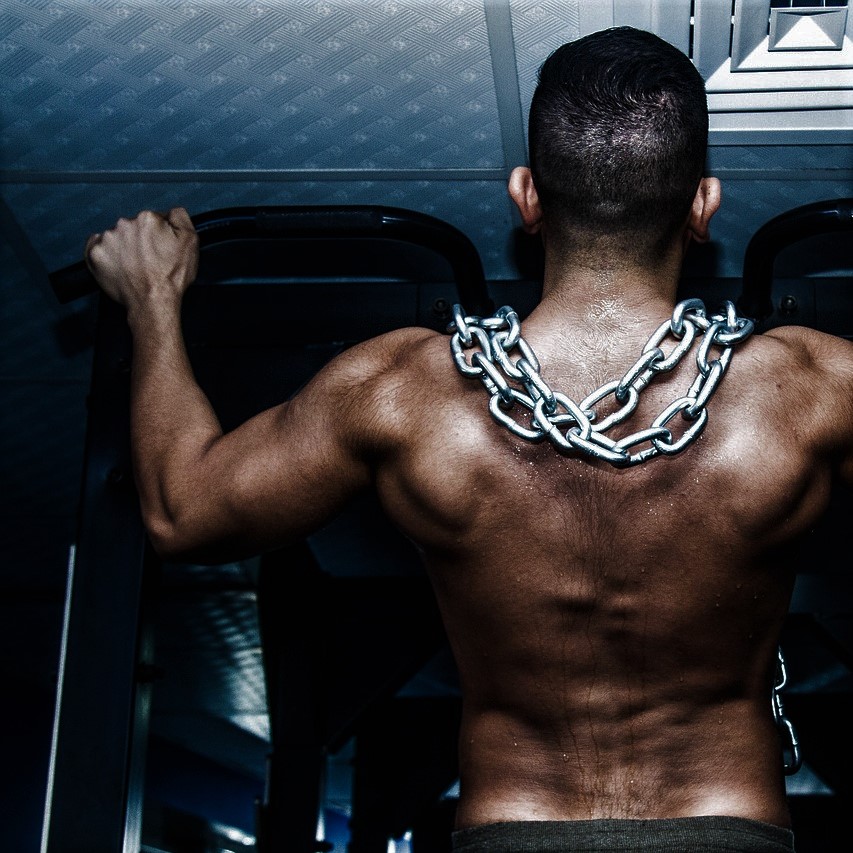Burn Fat and Build Muscle Simultaneously
It is known that weight training adds lean body mass (muscle) and that a high protein intake, in combination with weight training, boosts this increase. On a diet, you will probably lose both fat mass and, to some extent, a percentage of your hard earned muscle.
For all of us, it is most welcomed that muscle loss during dieting stays as low as possible. Resistance training, high intensity interval training (HIIT) and a higher protein intake have been shown to separately preserve muscle mass during a period of energy deficiency.
Diets That Burn Fat and Build Muscle
Researchers tested a very low calorie/ high exercise setup for weight loss using either a 100% carbohydrate or a 100% protein diet (0.8 g protein/ kg body weight). Surprisingly the study did not find any difference in lean body mass (LBM) or fat loss between the groups. A hypothesis was that the protein intake was too low in both groups to make any difference in saving muscle mass. With this in mind, we now want to share results from a study where researchers test the effects of high protein + low calorie + intense exercise. How does this combination affect wanted to test if all of the three interventions together might save muscle mass during a diet.
Combining High Protein + Low Calorie + Intense Exercise
Forty young healthy young adults were randomized in to one of two groups: one following a high protein diet (2.4g/kg/body weight) and one following a low protein diet (1.2g/kg/bw) which ate more fats instead. Carbohydrate intake was similar between groups. During a 4-week period both groups only ingested about 60% of the daily kcal needed for sustaining their weight (ca 33kcal/ kg lean body mass) and performed resistance exercise training combined with high intensity interval training 6d/week. Calories were most likely similar between groups, since very few studies are able to completely control what people actually eat, this was pretty good. The participants were all physically active in sports but did not regularly go to the gym or the tracks.
Findings: Effects on Strength, Fat and Muscle
- Strength: Both groups significantly increased their leg press, bench press, push- up count and sit-up count. For example: the protein group added 170lbs to their leg press and 40 lbs to their bench press
- Lean body mass (muscle mass) increased significantly in the high protein group (1.2+-1kg) as compared to the control group (0.1 +- 1kg).
- Loss of fat mass was also significantly greater for the protein group (-4.8+- 1.6kg) compared to (-3.5+- 1.4kg) for the control group.
- Anaerobic capacity: Peak and mean power on the Wingate test (30s of all out bicycling) improved. significantly for both groups.
- Aerobic capacity (VO2 max) improved significantly for both groups.
Blood was taken in a fasted state before and after intervention: Thyroid hormones, growth hormone, hunger hormones, insulin and cortisol was significantly altered after intervention.
- Thyroid hormones were lowered and SHBG was increased. This could mean that the total metabolism was lowered in both groups.
- Insulin levels were lowered. Lower insulin levels in a fasting state is in healthy adults often a good thing. This could mean that insulin sensitivity had increased after the intervention.
- Growth hormone was higher but IGF-1 lower. IGF-1 is the more active version of growth hormone.
- Cortisol was higher. Cortisol increases with stress, both physical and psychological. Only changes in cortisol concentrations were correlated to changes in body composition.
- Ghrelin, a hunger hormone, increased. Increase in ghrelin→ more hunger.
Participants Did Not Lift Regularly
Although the study population played noncompetitive sports or did some other form of physical activity 1–2 times per week, none lifted weights regularly. This means that they probably had an easier time building muscle, even if they were in a caloric deficit. Therefore it is not promised that the same results would be seen in a population of experienced lifters.
Also, once again, we ask you to remember that hormone levels only give us clues, and not definitive answers to whether something is good or bad for weight loss or building muscle. So interpret the hormones above with caution.
How to Burn Fat and Build Muscle Fast
Gaining muscle and simultaneously losing fat is possible if put on a low calorie/ high protein diet with simultaneous resistance and interval exercise. It is also possible to gain strength during this time of energy restriction. The absolute numbers in strength parameters were bigger in the protein group, but according to this study, you can increase your strength even if you fall short on protein scoops. In accordance with a previous statement from EBT, it might actually be enough with 2 g protein per kilo bodyweight.
Article by team EBT member Jonas Liefke, 4th year Medical Student, BSC Physiotherapy
Source (DOI): 10.3945/ajcn.115.119339




